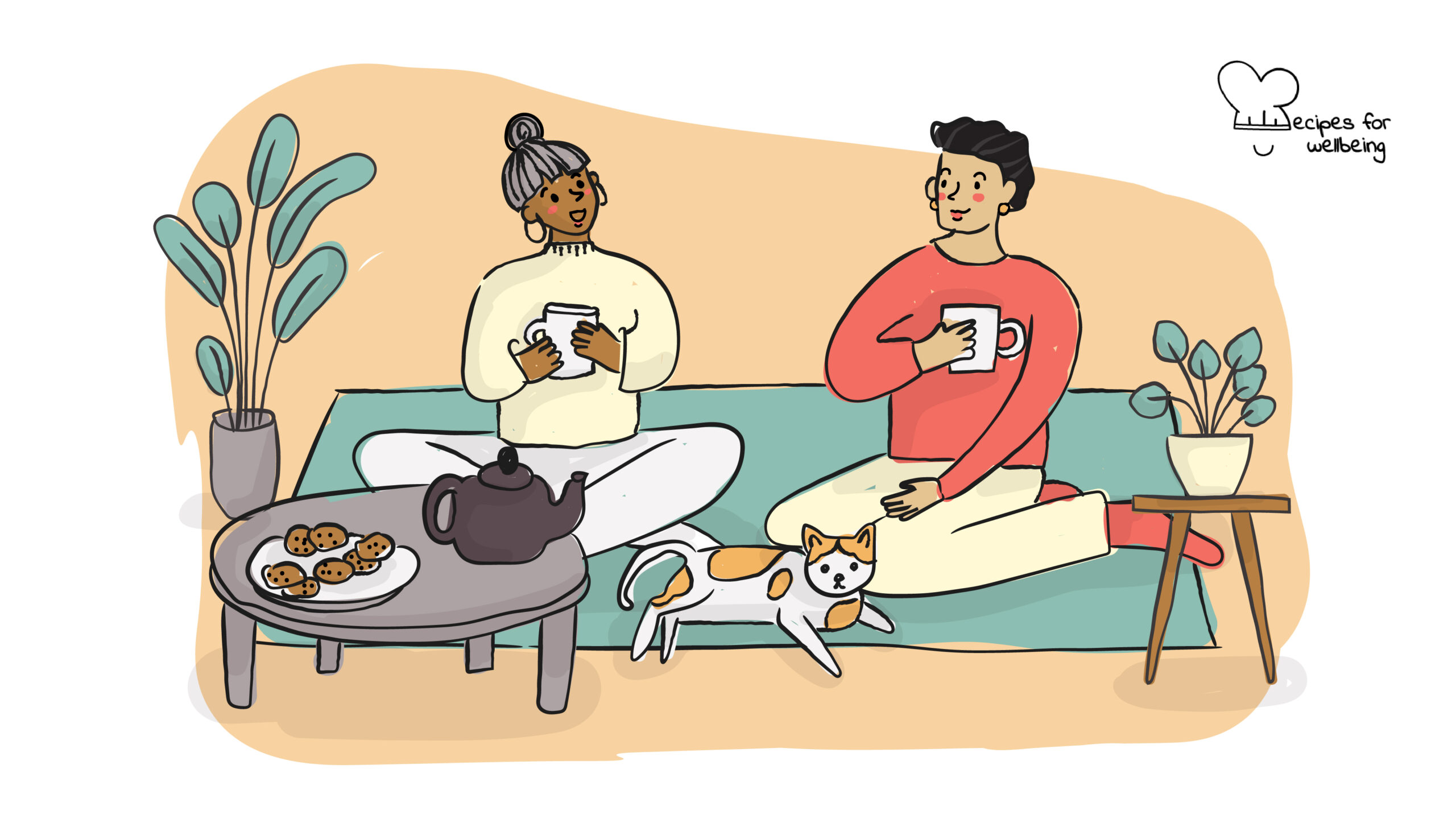
Cultivating presence
The practice of deep listening is the practice of open inquiry, without assumption or judgment. ―Sharon Weil
👥 Serves: 2-10 people
🎚 Difficulty: Hard
⏳ Total time: 31-60 minutes
🥣 Ingredients: A quiet place with no distractions, 1 person to talk to, “Leading from within” book by Gretchen Ki Steidle (if you’re curious to find out more about it!)
🤓 Wholebeing Domains: Awareness, Community, Radical Care
💪 Wholebeing Skills: Compassion, Emotional intelligence, Empathy, Focus, Holding space, Listening, Perspective, Presence, Relating to Others

Cultivating presence
📝 Description
Cultivating presence through deep listening and inquiry without imposition.
If you have already practised our recipe “Active listening”, then you might be ready to take your listening skills to the next level and practise deep listening to enhance the quality of your presence. There are overlaps with the active listening activity (it is about listening after all!), but this deep listening practice is particularly effective in situations where you want to support self-empowerment in the other person. The instructions adapted from the book Leading from within – Conscious social change and mindfulness for social innovation by Gretchen Ki Steidle.
In brief, deep listening focuses on your ability to experience compassion and be present with the other. Very often, this is the most precious gift you can offer someone in need. Instead of falling into the trap of wanting to ‘fix it’ for them, we show up for them and create a space where they can expand their sense of agency and come to their own solution. As Gretchen Ki Steidle explains, this is “a more empowering and mindful approach than simply giving your advice outright.” You can find this approach particularly helpful for other recipes such as coaching feedback, unlimited empathy, and identifying your goals and resources. And if you are curious about Zen ways of listening, check out our recipe “Compassionate listening”.
👣 Steps
Step 1 – Preparation
Find a quiet place where you can talk to the person who’s asked for your help without interruption or distraction. Invite them to share what’s on their mind. As they do so, try to follow the tips below.
Step 2 – Mirror
Use repetition to make the other person feel heard, even if it may feel strange to you. For instance, if the other person says, “I am very confused right now and have no idea what to do next.” You reply, “So, you’re feeling very confused right now and have no idea what to do next?”.
Step 3 – Further inquiry
If the person is stuck, you may help them by asking a few open-ended questions, e.g. “What else?” or “Can you tell me more?” or “Can you elaborate further?”.
Step 4 – Invite questions
Here you switch the focus of your questions to be more targeted. The purpose here is to help the other person move beyond the story they are stuck in towards a more constructive and possibility-oriented process to reach their own conclusion. Coaching questions such as: “What do you feel like needs to happen now?” or “What do you really want?” or “What would help you right now?” or “Who might help you in this process?” Again, you want to create a space for them to explore, rather than lead them towards your solution.
Step 5 – Validate and affirm
When the person answers any of your previous questions, you can continue to support them through validation and affirmation. This is not about offering your solution, but about supporting their capacity to access their own wisdom and intelligence. For instance, if they say, “I’m not good enough.” You may counter with “I understand you feel you’re not good enough, but I have seen your capacity to lead others.” It is important you are truthful and provide an authentic recognition of who they are and their qualities, rather than saying anything positive for the sake of it.
Step 6 – Advice
It may come to a point where the person asks for your advice. It is important this is welcomed and asked from them, rather than imposed from you. Also, asking for advice might be a sign that the other person is giving up on their own power to an authority. So, it is important that you check whether they want you to solve the problem for them. You may need to say, “I don’t feel qualified to know what’s best” or “How may I best support you?” However, there might be times where you can offer valuable advice, especially if the person may be in danger or at risk as withholding advice could be neglectful. Again, try to create the space for the other person to access their inner wisdom and feel self-empowered.

